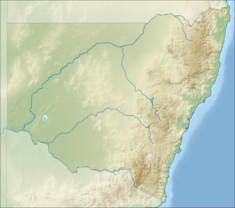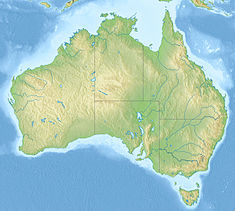
Kiama is a coastal country town 120 kilometres south of Sydney in the Illawarra. One of the main tourist attractions is the Kiama Blowhole. Kiama features several popular surfing beaches and caravan parks, and numerous alfresco cafes and restaurants. Its proximity to the south of Sydney makes it an attractive destination for many day-trippers and weekenders. Kiama also has historically been a farming and agricultural centre. Even to today it maintains a country and agricultural community with a weekly farmers markets held on Wednesday afternoons.

Nowra is a city in the South Coast region of New South Wales, Australia. It is located 160 kilometres (99 mi) south-southwest of the state capital of Sydney. As of the 2021 census, Nowra has an estimated population of 22,584. Situated in the southern reaches of the Sydney basin, Nowra is the seat and commercial centre of the City of Shoalhaven.

Bomaderry is a suburb in the City of Shoalhaven local government area in New South Wales, Australia. At the 2021 census, it had a population of 8,718 people. It is on the north shore of the Shoalhaven River, across the river from Nowra, the major town of the City of Shoalhaven, of which Bomaderry is locally regarded as being a suburb of the city.

Gerringong is a town located about ten minutes drive south of Kiama, and about twenty minutes north of Nowra in the Illawarra region of New South Wales, Australia in the Municipality of Kiama. At the 2021 census, Gerringong had a population of 4,165. One theory says that the name derives from an Aboriginal word meaning "fearful place".

A coffee palace was an often large and elaborate residential hotel that did not serve alcohol, most of which were built in Australia in the late 19th century.

South Coast Group 7 Rugby League is the divisional boundary drawn from the Southern Illawarra and South Coast regions of New South Wales, Australia and is governed by the NSWCRL. The main semi-professional competition,, comprises ten (10) teams from across the region. Group 7 Rugby League also administers reserve grade, third grade, and under-18s competitions, Ladies League Tag, as well as looking over many junior competitions.

Bombo is a suburb of the Municipality of Kiama, in the Illawarra region of New South Wales, Australia. It is located 2 kilometres (1.2 mi) north of Kiama.

Hawthorne is a suburb of the City of Brisbane, Queensland, Australia. In the 2021 census, Hawthorne had a population of 5,090 people.

The Ardglen Tunnel, also called the Liverpool Range tunnel, is a heritage-listed summit rail tunnel located on the Main North railway between the village of Ardglen and Murrurundi in New South Wales, Australia. The tunnel crosses under the Liverpool Range near its east end, below Nowlands Gap, the crossing used by the New England Highway, and provides a vital link between Newcastle and Werris Creek. The tunnel was completed in 1877 and is owned by the Transport Asset Holding Entity, a state-owned corporation of the Government of New South Wales. It was added to the New South Wales State Heritage Register on 2 April 1999.

Thomas English was a leading colonial architect in South Australia, Mayor of Adelaide (1862–1863), and a member of the South Australian Legislative Council 1865–1878 and 1882–1884.

George Mason Burns was an Australian politician. He was an Australian Labor Party member of the Australian House of Representatives from 1913 to 1917, representing the electorate of Illawarra. He had previously been a member of the Tasmanian House of Assembly from 1903 to 1906.
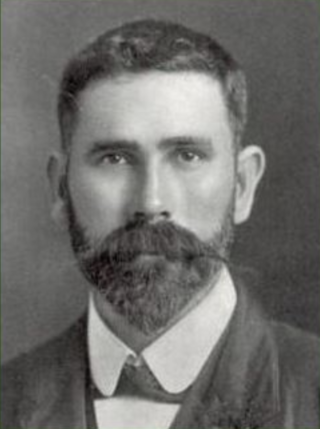
Hugh Sinclair was an Australian politician. He was a member of the Australian House of Representatives from 1906 until 1919, representing the electorate of Moreton for the Anti-Socialist Party and its successors the Commonwealth Liberal Party and Nationalist Party.
The Drover's Sweetheart is a 1911 film from the team of Agnes and John Gavin.
Tullimbar is a suburb situated in the Macquarie Valley in the City of Shellharbour, New South Wales, Australia.

The Kiama Independent and Illawarra and Shoalhaven Advertiser, also published originally as Kiama Examiner, then as The Examiner , was a weekly English language newspaper published in Kiama, New South Wales, Australia. It was also published as The Kiama Independent and Shoalhaven Advertiser and since 1947 as Kiama Independent.

The Albany Masonic Hall, also known as Plantagenet Lodge, is a heritage listed building located at 58–60 Spencer Street, on the corner of Earl Street, on the south western slopes of Mount Clarence in Albany in the Great Southern region of Western Australia.
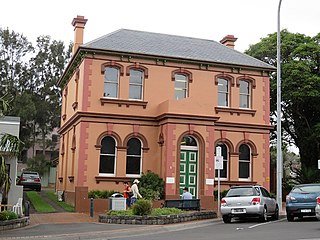
CBC Bank is a heritage-listed former bank building at 16–20 Manning Street, Kiama, in the Illawarra region of New South Wales, Australia. It was designed by Mansfield Bros and built by White and Coghill in 1880. It was added to the New South Wales State Heritage Register on 2 April 1999.
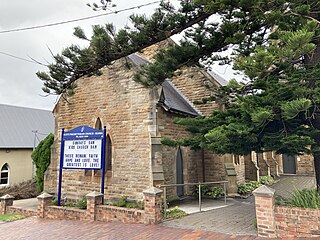
The Scots Presbyterian Church is a heritage-listed Presbyterian church at Shoalhaven Street, Kiama, Municipality of Kiama, New South Wales, Australia. It was designed by Thomas Rowe and built from 1860 to 1863 by builders Moon & Simmons and carpenters Walker Bros. It is also known as Kiama Presbyterian Church. It was added to the New South Wales State Heritage Register on 2 April 1999.

Leycester Creek railway bridge is a heritage-listed railway bridge that carries the closed Murwillumbah railway line across Leycester Creek in Lismore, in the City of Lismore local government area of New South Wales, Australia. The bridge is owned by Transport Asset Holding Entity, an agency of the Government of New South Wales and was added to the New South Wales State Heritage Register on 2 April 1999.

